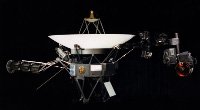
The twin Voyager 1 and 2 spacecraft are exploring where nothing from Earth has flown before. Continuing on their more-than-44-year journey since their 1977 launches, they each are much farther away from Earth and the sun than Pluto. In August 2012, Voyager 1 made the historic entry into interstellar space, the region between stars, filled with material ejected by the death of nearby stars millions of years ago. Scientists are learning more about this region since Voyager 2 left the heliosphere in November 2018 and joined Voyager 1 in interstellar space. Both spacecraft are still sending scientific information about their surroundings through the Deep Space Network, or DSN.
The primary mission was the exploration of Jupiter and Saturn. After making a string of discoveries there - such as active volcanoes on Jupiter's moon Io and intricacies of Saturn's rings - the mission was extended. Voyager 2 went on to explore Uranus and Neptune, and is still the only spacecraft to have visited those outer planets. The adventurers' current mission, the Voyager Interstellar Mission (VIM), will explore the outermost edge of the Sun's domain. And beyond.


Engineers Solve Data Glitch on NASA’s Voyager 1

Voyager’s high-gain antenna, seen at the center of this illustration of the NASA spacecraft, is one component controlled by the attitude articulation and control system (AACS).
A critical system aboard the probe was sending garbled data about its status. Engineers have fixed the issue but are still seeking the root cause.
Engineers have repaired an issue affecting data from NASA’s Voyager 1 spacecraft. Earlier this year , the probe’s attitude articulation and control system (AACS), which keeps Voyager 1’s antenna pointed at Earth, began sending garbled information about its health and activities to mission controllers, despite operating normally. The rest of the probe also appeared healthy as it continued to gather and return science data.
The team has since located the source of the garbled information: The AACS had started sending the telemetry data through an onboard computer known to have stopped working years ago, and the computer corrupted the information.
Suzanne Dodd, Voyager’s project manager, said that when they suspected this was the issue, they opted to try a low-risk solution: commanding the AACS to resume sending the data to the right computer.
Engineers don’t yet know why the AACS started routing telemetry data to the incorrect computer, but it likely received a faulty command generated by another onboard computer. If that’s the case, it would indicate there is an issue somewhere else on the spacecraft. The team will continue to search for that underlying issue, but they don’t think it is a threat to the long-term health of Voyager 1.
Get the Latest JPL News
“We’re happy to have the telemetry back,” said Dodd. “We’ll do a full memory readout of the AACS and look at everything it’s been doing. That will help us try to diagnose the problem that caused the telemetry issue in the first place. So we’re cautiously optimistic, but we still have more investigating to do.”
Voyager 1 and Voyager 2 have been exploring our solar system for 45 years . Both probes are now in interstellar space , the region outside the heliopause, or the bubble of energetic particles and magnetic fields from the Sun.
More About the Mission
A division of Caltech in Pasadena, JPL built and operates the Voyager spacecraft. The Voyager missions are a part of the NASA Heliophysics System Observatory, sponsored by the Heliophysics Division of the Science Mission Directorate in Washington.
For more information about the Voyager spacecraft, visit:
https://www.nasa.gov/voyager
News Media Contact
Calla Cofield
Jet Propulsion Laboratory, Pasadena, Calif.
626-808-2469

The twin Voyager 1 and 2 spacecraft are exploring where nothing from Earth has flown before. Continuing on their more-than-45-year journey since their 1977 launches, they each are much farther away from Earth and the Sun than Pluto.
Quick Facts
Voyager 2 launched on August 20, 1977, from Cape Canaveral, Florida aboard a Titan-Centaur rocket. On September 5, Voyager 1 launched, also from Cape Canaveral aboard a Titan-Centaur rocket.
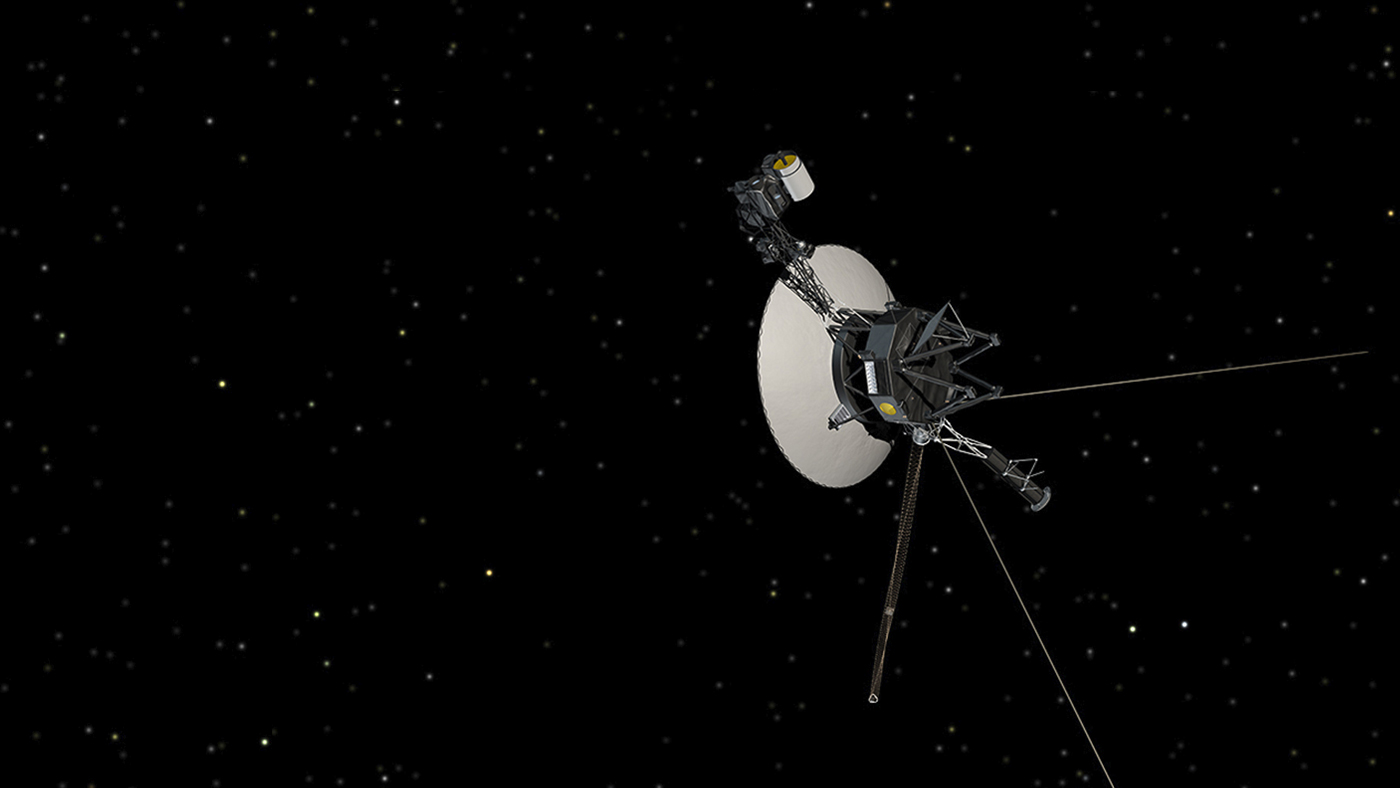
Between them, Voyager 1 and 2 explored all the giant planets of our outer solar system, Jupiter, Saturn, Uranus and Neptune; 48 of their moons; and the unique system of rings and magnetic fields those planets possess.
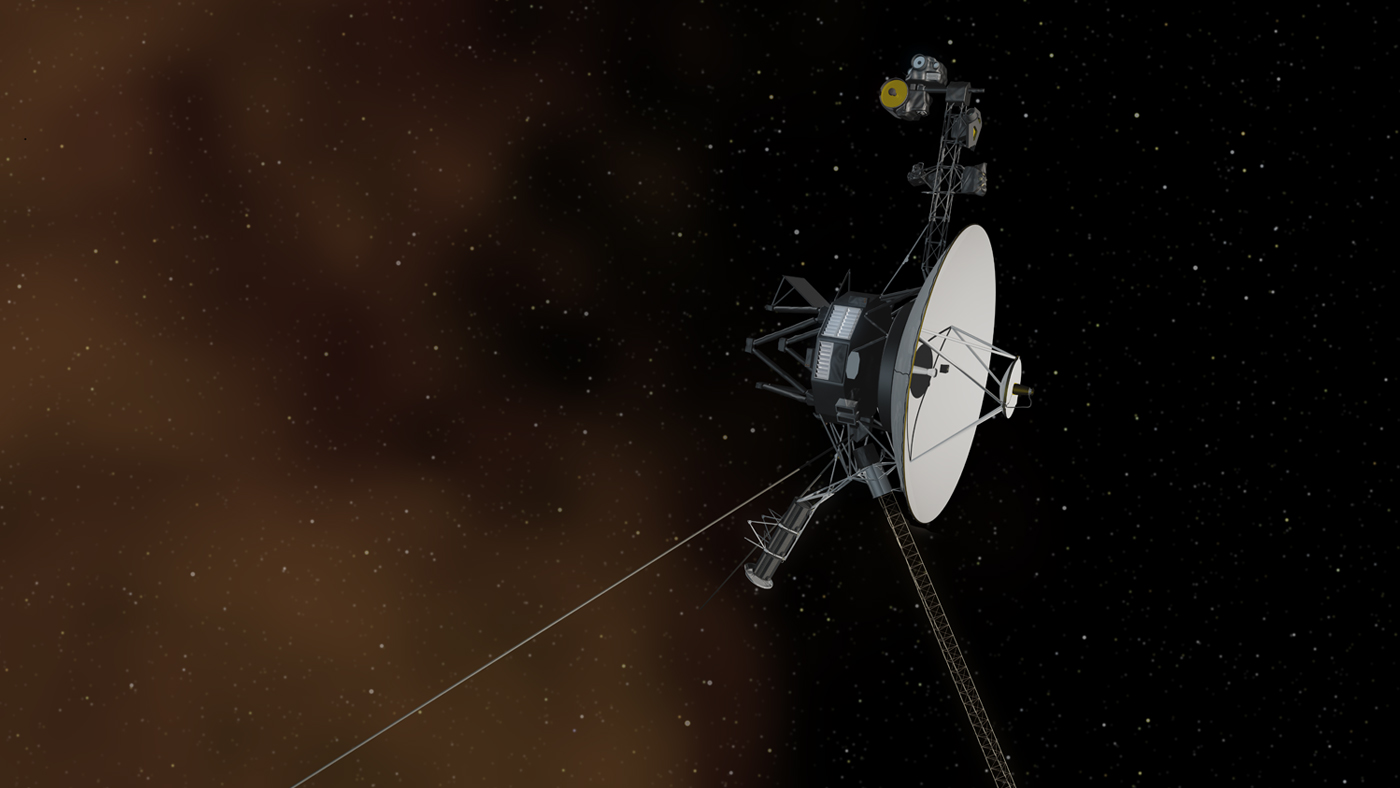
The Voyager spacecraft are the third and fourth human spacecraft to fly beyond all the planets in our solar system. Pioneers 10 and 11 preceded Voyager in outstripping the gravitational attraction of the Sun.
Voyager 1 crossed the termination shock in December 2004 at about 94 AU from the Sun while Voyager 2 crossed it in August 2007 at about 84 AU.
Both Voyager spacecrafts carry a greeting to any form of life, should that be encountered. The message is carried by a phonograph record - -a 12-inch gold-plated copper disk containing sounds and images selected to portray the diversity of life and culture on Earth.
In August 2012, Voyager 1 made the historic entry into interstellar space, the region between stars, filled with material ejected by the death of nearby stars millions of years ago. Voyager 2 entered interstellar space on November 5, 2018 and scientists hope to learn more about this region. Both spacecraft are still sending scientific information about their surroundings through the Deep Space Network, or DSN.
The primary mission was the exploration of Jupiter and Saturn. After making a string of discoveries there — such as active volcanoes on Jupiter's moon Io and intricacies of Saturn's rings — the mission was extended. Voyager 2 went on to explore Uranus and Neptune, and is still the only spacecraft to have visited those outer planets. The adventurers' current mission, the Voyager Interstellar Mission (VIM), will explore the outermost edge of the Sun's domain. And beyond.
Learn about Voyagers' mission status: where they are in the space, the time required to communicate with them, and a lot more.
Learn about the five science investigation teams, the four operating instruments on-board and the science data being returned to Earth.
The Voyager spacecraft have been exploring for decades. Dive deep into the journey with this interactive timeline.
Interact in 3D. Take a deeper look at the sophisticated systems and instruments that deliver the stunning science and images.
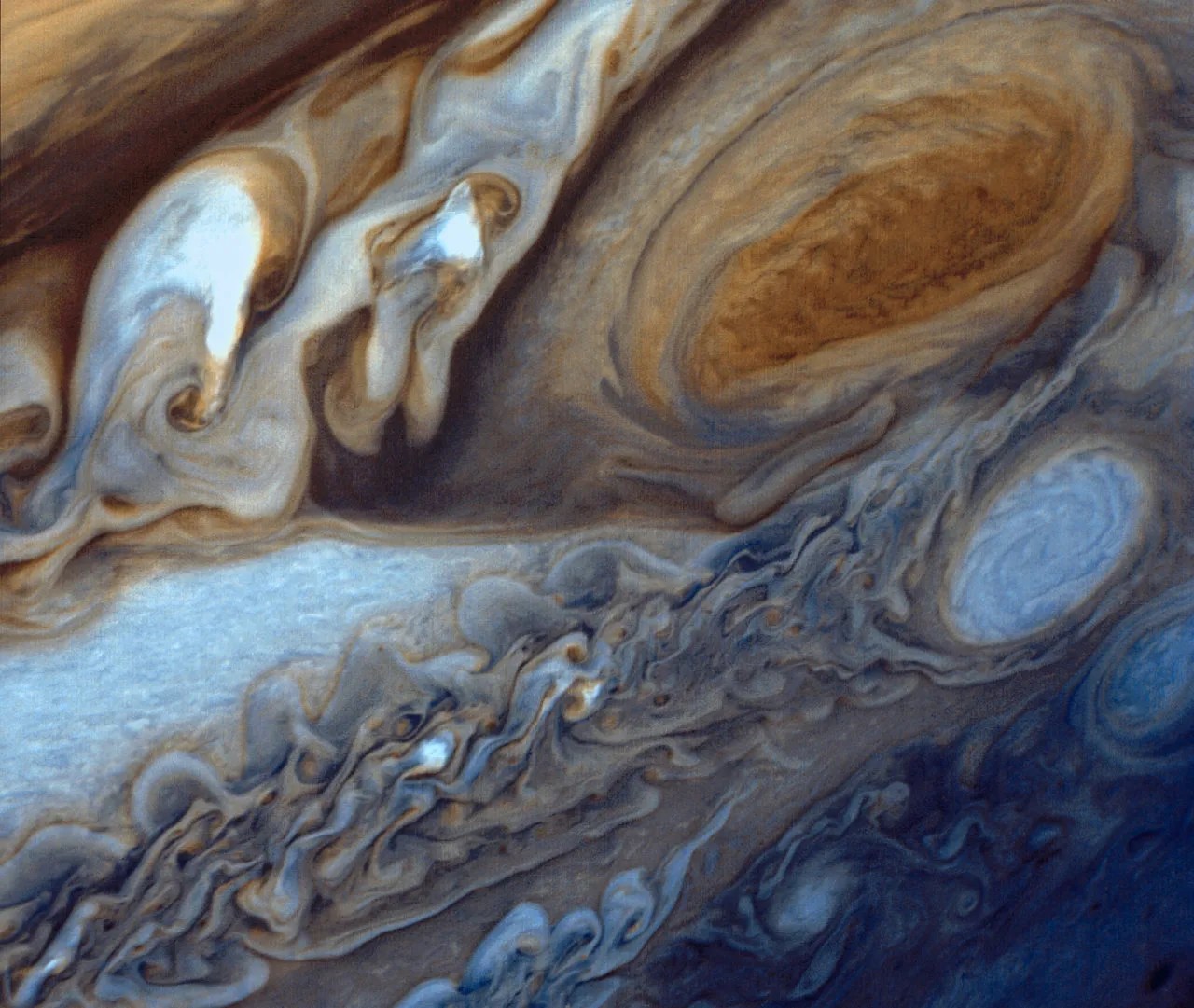
Interstellar Mission
The mission objective of the Voyager Interstellar Mission (VIM) is to extend the NASA exploration of the solar system beyond the neighborhood of the outer planets to the outer limits of the Sun's sphere of influence, and possibly beyond.
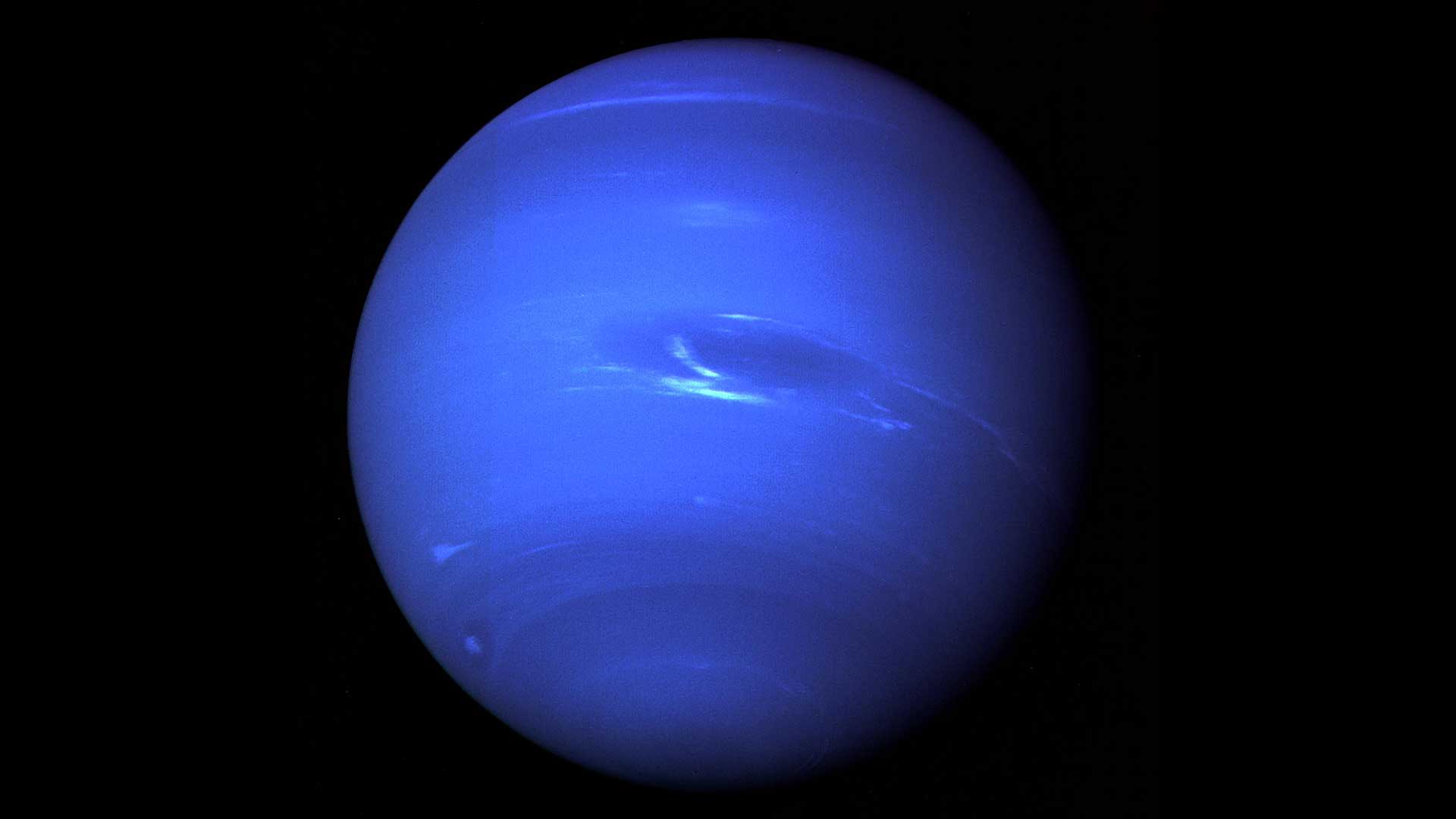
Planetary Voyage
The twin spacecraft Voyager 1 and Voyager 2 were launched by NASA in separate months in the summer of 1977 from Cape Canaveral, Florida. As originally designed, the Voyagers were to conduct closeup studies of Jupiter and Saturn, Saturn's rings, and the larger moons of the two planets.
Questions, answers and interviews that explain the Voyager mission.
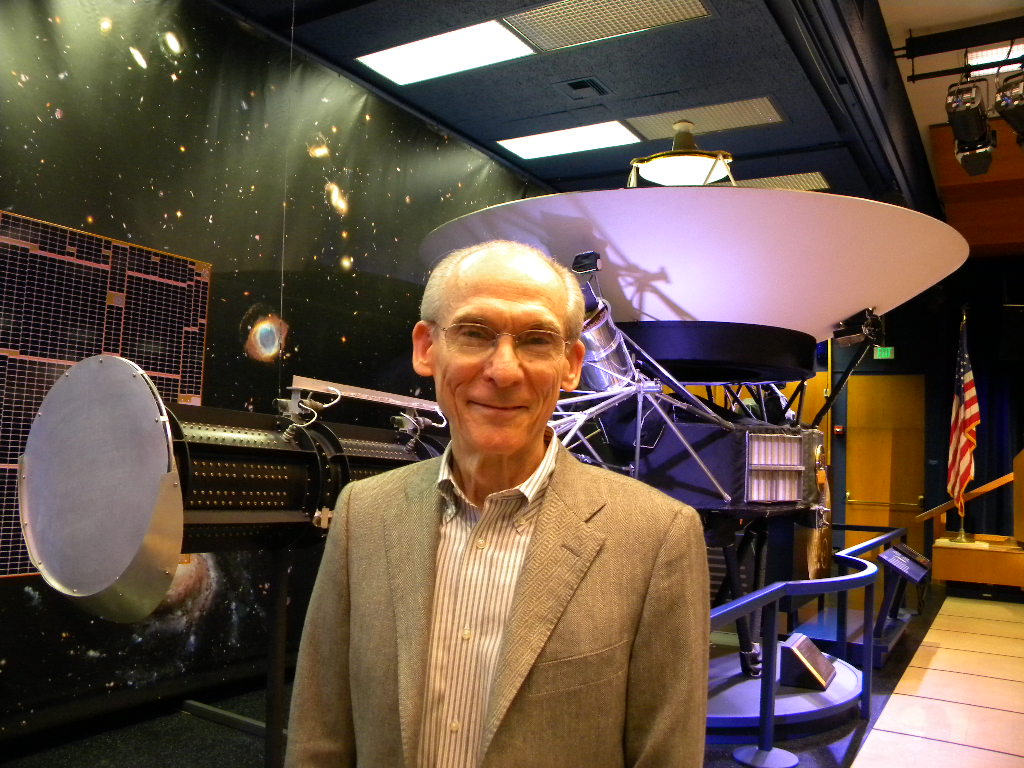

Suggested Searches
- Climate Change
- Expedition 64
- Mars perseverance
- SpaceX Crew-2
- International Space Station
- View All Topics A-Z
Humans in Space
Earth & climate, the solar system, the universe, aeronautics, learning resources, news & events.

Join NASA in Celebrating Earth Day 2024 by Sharing a #GlobalSelfie

NASA Selects New Aircraft-Driven Studies of Earth and Climate Change

The Ocean Touches Everything: Celebrate Earth Day with NASA
- Search All NASA Missions
- A to Z List of Missions
- Upcoming Launches and Landings
- Spaceships and Rockets
- Communicating with Missions
- James Webb Space Telescope
- Hubble Space Telescope
- Why Go to Space
- Astronauts Home
- Commercial Space
- Destinations
- Living in Space
- Explore Earth Science
- Earth, Our Planet
- Earth Science in Action
- Earth Multimedia
- Earth Science Researchers
- Pluto & Dwarf Planets
- Asteroids, Comets & Meteors
- The Kuiper Belt
- The Oort Cloud
- Skywatching
- The Search for Life in the Universe
- Black Holes
- The Big Bang
- Dark Energy & Dark Matter
- Earth Science
- Planetary Science
- Astrophysics & Space Science
- The Sun & Heliophysics
- Biological & Physical Sciences
- Lunar Science
- Citizen Science
- Astromaterials
- Aeronautics Research
- Human Space Travel Research
- Science in the Air
- NASA Aircraft
- Flight Innovation
- Supersonic Flight
- Air Traffic Solutions
- Green Aviation Tech
- Drones & You
- Technology Transfer & Spinoffs
- Space Travel Technology
- Technology Living in Space
- Manufacturing and Materials
- Science Instruments
- For Kids and Students
- For Educators
- For Colleges and Universities
- For Professionals
- Science for Everyone
- Requests for Exhibits, Artifacts, or Speakers
- STEM Engagement at NASA
- NASA's Impacts
- Centers and Facilities
- Directorates
- Organizations
- People of NASA
- Internships
- Our History
- Doing Business with NASA
- Get Involved
- Aeronáutica
- Ciencias Terrestres
- Sistema Solar
- All NASA News
- Video Series on NASA+
- Newsletters
- Social Media
- Media Resources
- Upcoming Launches & Landings
- Virtual Events
- Sounds and Ringtones
- Interactives
- STEM Multimedia

Work Underway on Large Cargo Landers for NASA’s Artemis Moon Missions

Mars Science Laboratory: Curiosity Rover

NASA Open Science Initiative Expands OpenET Across Amazon Basin

NASA Motion Sickness Study Volunteers Needed!

Students Celebrate Rockets, Environment at NASA’s Kennedy Space Center

AI for Earth: How NASA’s Artificial Intelligence and Open Science Efforts Combat Climate Change

Sols 4159-4160: A Fully Loaded First Sol

NASA’s Juno Gives Aerial Views of Mountain, Lava Lake on Io

Hubble Captures a Bright Galactic and Stellar Duo

NASA’s TESS Returns to Science Operations

Astronauts To Patch Up NASA’s NICER Telescope

Hubble Goes Hunting for Small Main Belt Asteroids

NASA’s Near Space Network Enables PACE Climate Mission to ‘Phone Home’

NASA Photographer Honored for Thrilling Inverted In-Flight Image

NASA Langley Team to Study Weather During Eclipse Using Uncrewed Vehicles

ARMD Solicitations

Amendment 10: B.9 Heliophysics Low-Cost Access to Space Final Text and Proposal Due Date.

Tech Today: Taking Earth’s Pulse with NASA Satellites
Earth Day 2024: Posters and Virtual Backgrounds

NASA Names Finalists of the Power to Explore Challenge

Diez maneras en que los estudiantes pueden prepararse para ser astronautas

Astronauta de la NASA Marcos Berríos


Resultados científicos revolucionarios en la estación espacial de 2023
Voyager 1 entering interstellar space.

This artist’s concept depicts NASA’s Voyager 1 spacecraft entering interstellar space , or the space between stars. Interstellar space is dominated by the plasma, or ionized gas, that was ejected by the death of nearby giant stars millions of years ago. The environment inside our solar bubble is dominated by the plasma exhausted by our sun, known as the solar wind.
The interstellar plasma is shown with an orange glow similar to the color seen in visible-light images from NASA’s Hubble Space Telescope that show stars in the Orion nebula traveling through interstellar space.
Image credit: NASA/JPL-Caltech
We finally know why NASA's Voyager 1 spacecraft stopped communicating — scientists are working on a fix
The first spacecraft to explore beyond the solar system started spouting gibberish late last year. Now, NASA knows why.

NASA engineers have discovered the cause of a communications breakdown between Earth and the interstellar explorer Voyager 1. It would appear that a small portion of corrupted memory exists in one of the spacecraft's computers.
The glitch caused Voyager 1 to send unreadable data back to Earth, and is found in the NASA spacecraft's flight data subsystem (FDS). That's the system responsible for packaging the probe's science and engineering data before the telemetry modulation unit (TMU) and radio transmitter send it back to mission control.
The source of the issue began to reveal itself when Voyager 1 operators sent the spacecraft a "poke" on March 3, 2024. This was intended to prompt FDS to send a full memory readout back to Earth.
The readout confirmed to the NASA team that about 3% of the FDS memory had been corrupted, and that this was preventing the computer from carrying out its normal operations.
Related: NASA finds clue while solving Voyager 1's communication breakdown case
Launched in 1977, Voyager 1 became the first human-made object to leave the solar system and enter interstellar space in 2012. Voyager 2 followed its spacecraft sibling out of the solar system in 2018, and is still operational and communicating well with Earth.
After 11 years of interstellar exploration, in Nov. 2023, Voyager 1's binary code — the computer language it uses to communicate with Earth — stopped making sense. Its 0's and 1's didn't mean anything anymore.
Get the Space.com Newsletter
Breaking space news, the latest updates on rocket launches, skywatching events and more!
"Effectively, the call between the spacecraft and the Earth was still connected, but Voyager's 'voice' was replaced with a monotonous dial tone," Voyager 1's engineering team previously told Space.com .

The team strongly suspects this glitch is the result of a single chip that's responsible for storing part of the affected portion of the FDS memory ceasing to work.
Currently, however, NASA can’t say for sure what exactly caused that particular issue. The chip could have been struck by a high-speed energetic particle from space or, after 46 years serving Voyager 1, it may simply have worn out.
— Voyager 2: An iconic spacecraft that's still exploring 45 years on
— NASA's interstellar Voyager probes get software updates beamed from 12 billion miles away
— NASA Voyager 2 spacecraft extends its interstellar science mission for 3 more years
Voyager 1 currently sits around 15 billion miles (24 billion kilometers) from Earth, which means it takes 22.5 hours to receive a radio signal from it — and another 22.5 hours for the spacecraft to receive a response via the Deep Space Network's antennas. Solving this communication issue is thus no mean feat.
Yet, NASA scientists and engineers are optimistic they can find a way to help FDS operate normally, even without the unusable memory hardware.
Solving this issue could take weeks or even months, according to NASA — but if it is resolved, Voyager 1 should be able to resume returning science data about what lies outside the solar system.
Join our Space Forums to keep talking space on the latest missions, night sky and more! And if you have a news tip, correction or comment, let us know at: [email protected].

Robert Lea is a science journalist in the U.K. whose articles have been published in Physics World, New Scientist, Astronomy Magazine, All About Space, Newsweek and ZME Science. He also writes about science communication for Elsevier and the European Journal of Physics. Rob holds a bachelor of science degree in physics and astronomy from the U.K.’s Open University. Follow him on Twitter @sciencef1rst.
China rolls out rocket for next astronaut mission to Tiangong space station (photos)
SpaceX launches Starlink satellites on company's 40th mission of 2024 (video)
'Devil Comet' 12P/Pons-Brooks reaches peak brightness tonight. Here's how to see it
- jcs Funny timing for this article, when I am streaming an old Star Trek movie. So, surely this didn't cause a 3 byte glitch removing the O, Y and A from Voyager's name buffer? Get it? Reply
- bwana4swahili It is quite amazing it has lasted this long in a space environment. Reply
bwana4swahili said: It is quite amazing it has lasted this long in a space environment.
- HankySpanky So now we know even better for next time. Perhaps a spare chipset that is not redundant but is ready to take over, stored in a protective environment. A task NASA can handle. We'll find out in 100 year or so - if humanity still exists. Reply
HankySpanky said: So now we know even better for next time. Perhaps a spare chipset that is not redundant but is ready to take over, stored in a protective environment. A task NASA can handle. We'll find out in 100 year or so - if humanity still exists.
- Classical Motion I'm afraid it might self repair. And download galactic knowledge, then decide we are a danger. And turn around. Reply
Classical Motion said: I'm afraid it might self repair. And download galactic knowledge, then decide we are a danger. And turn around.
- jcs ROFLOL! And a hot bald chick delivering the bad news! Reply
- View All 8 Comments
Most Popular
- 2 Cosmonaut Muhammed Faris, first Syrian in space, dies at 72
- 3 This Week In Space podcast: Episode 107 — Mars Sample Return Blues
- 4 Lego Star Wars Millennium Falcon (2024) review
- 5 Those magic minutes during April 8's solar eclipse brought me to tears

- The Contents
- The Making of
- Where Are They Now
- Frequently Asked Questions
- Q & A with Ed Stone
golden record
Where are they now.
- frequently asked questions
- Q&A with Ed Stone
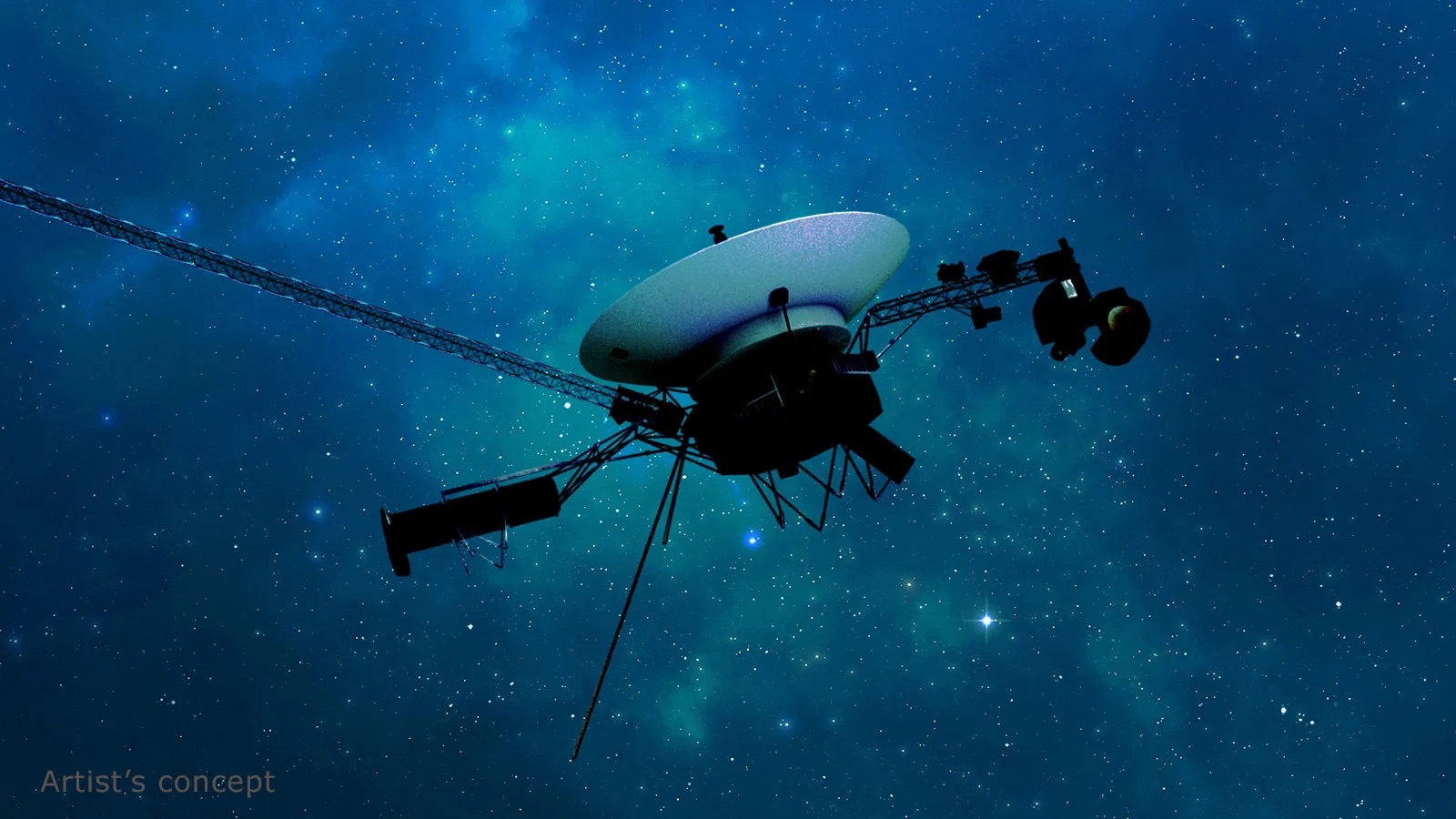
NASA’s Voyager Team Focuses on Software Patch, Thrusters

NASA Mission Update: Voyager 2 Communications Pause
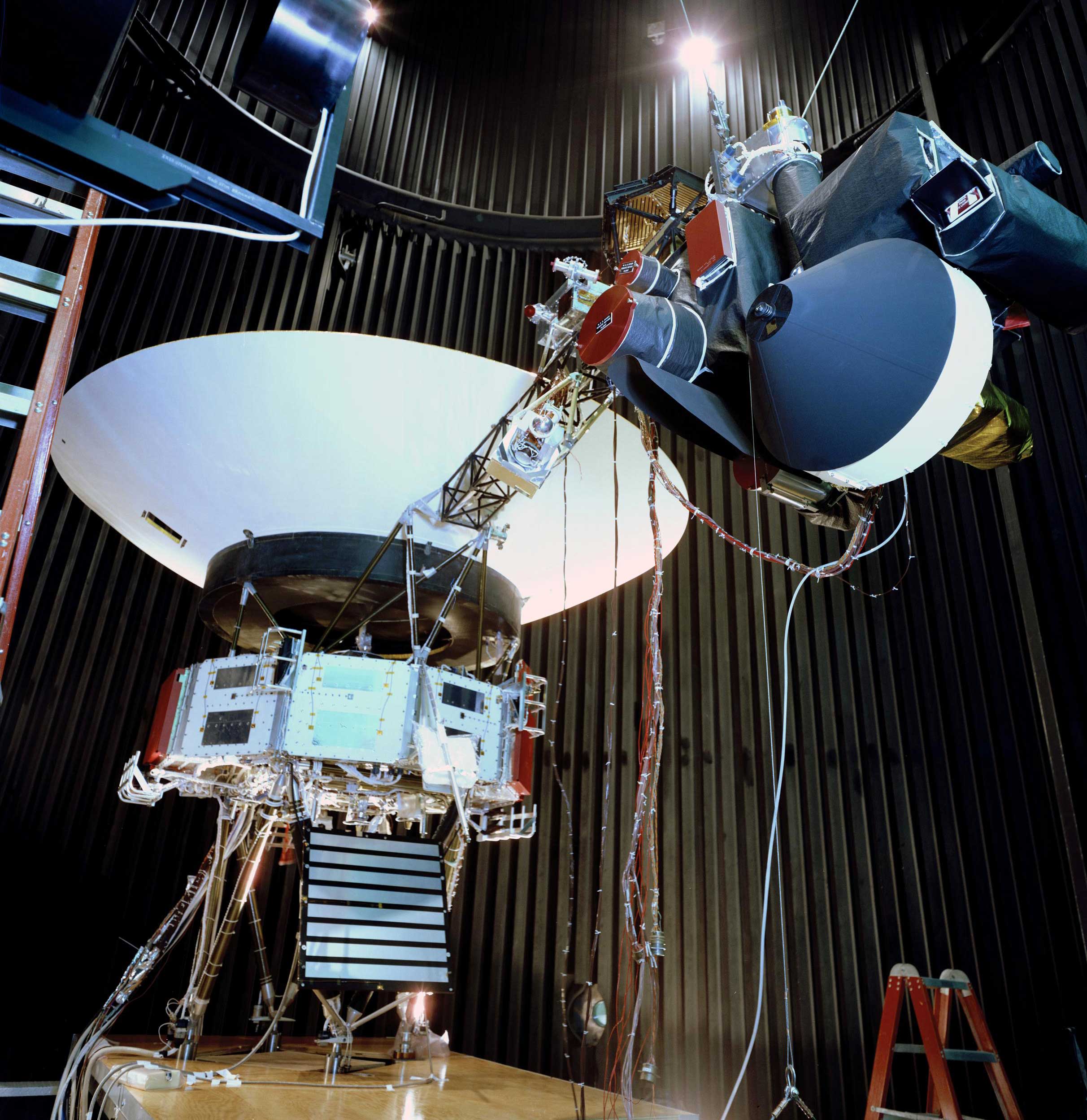
NASA's Voyager Will Do More Science With New Power Strategy
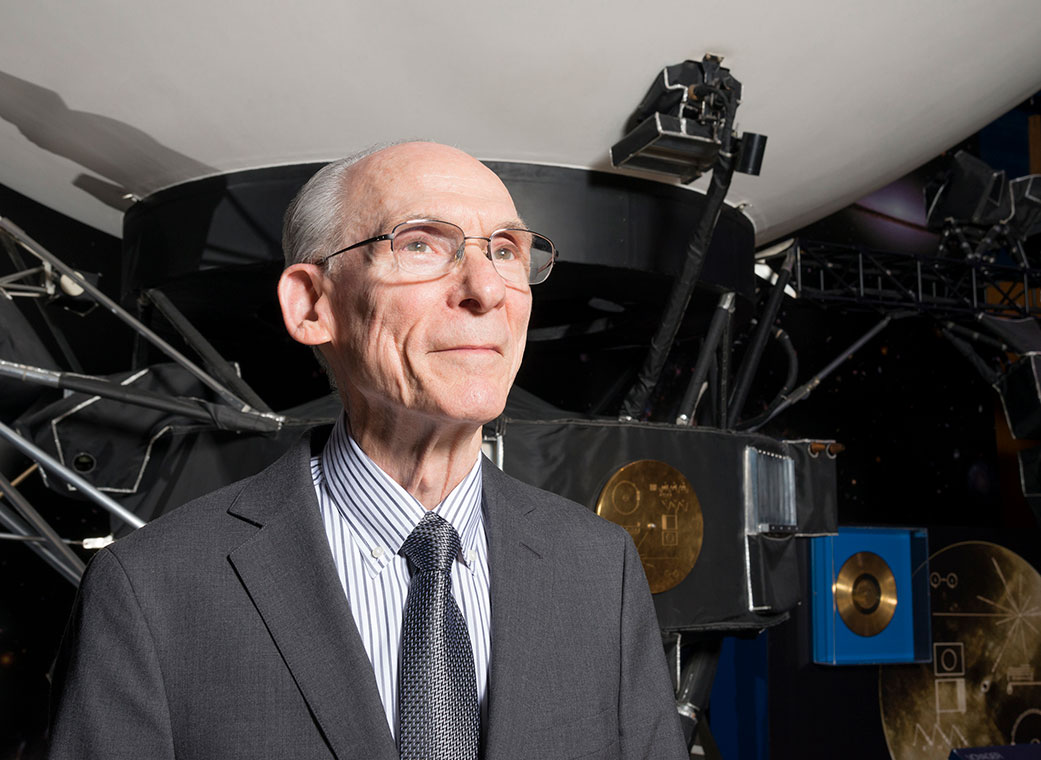
Edward Stone Retires After 50 Years as NASA Voyager's Project Scientist
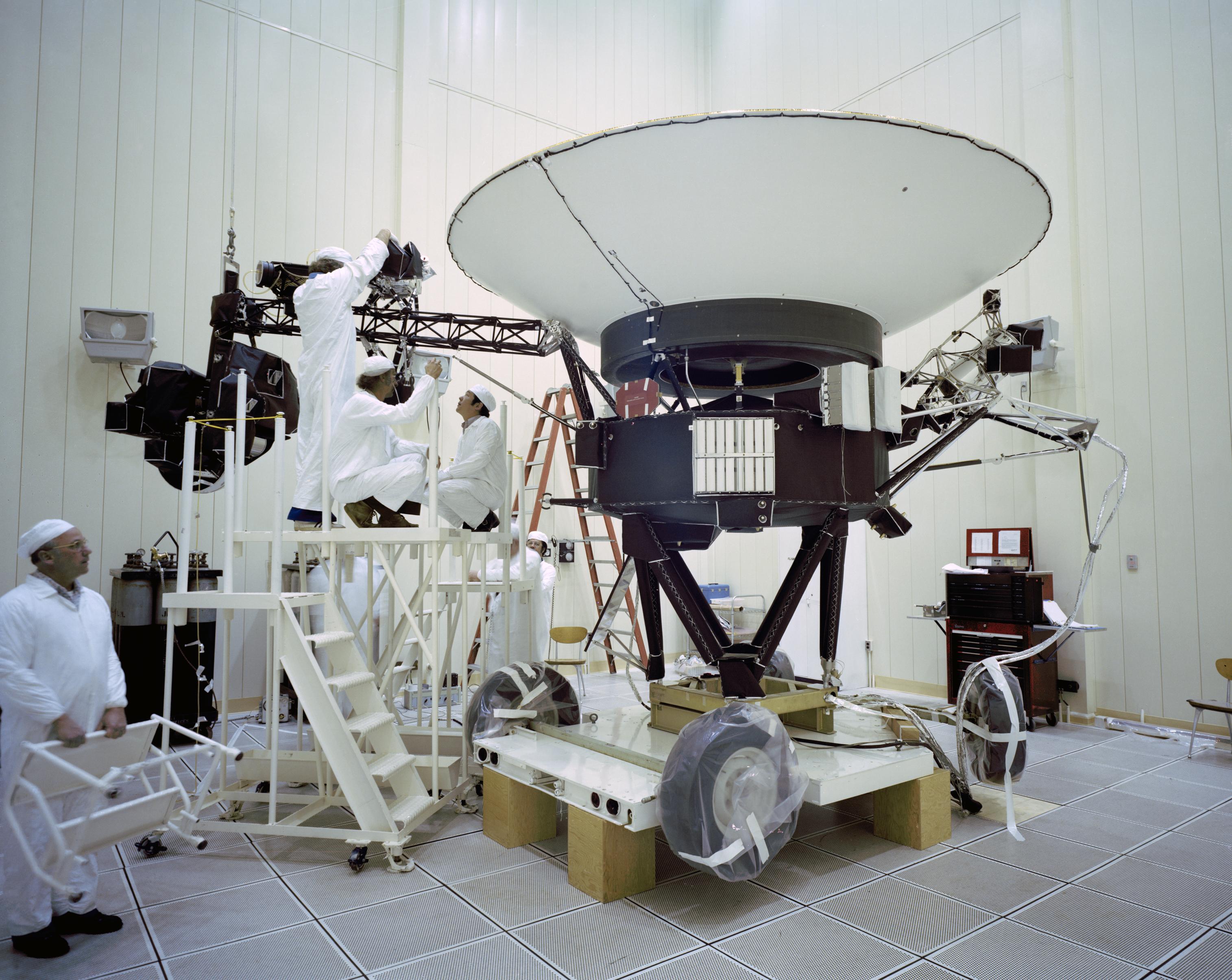
Voyager, NASA's Longest-Lived Mission, Logs 45 Years in Space
Voyager 1 distance from earth, voyager 1 distance from sun, voyager 1 one-way light time, voyager 1 cosmic ray data, voyager 2 distance from the earth, voyager 2 distance from the sun, voyager 2 one-way light time, voyager 2 cosmic ray data, what's happening now.
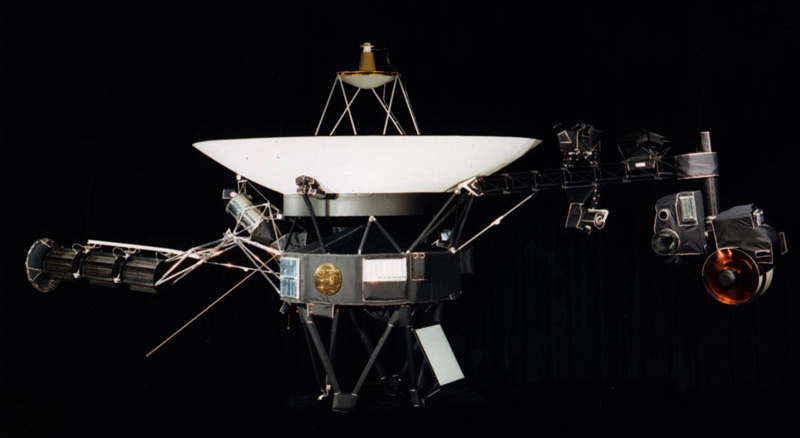
Since November 2023, NASA’s Voyager 1 spacecraft has been sending a steady radio signal to Earth, but the signal does not contain usable data.
Engineers are working to resolve an issue with one of Voyager 1’s three onboard computers, called the flight data system (FDS).
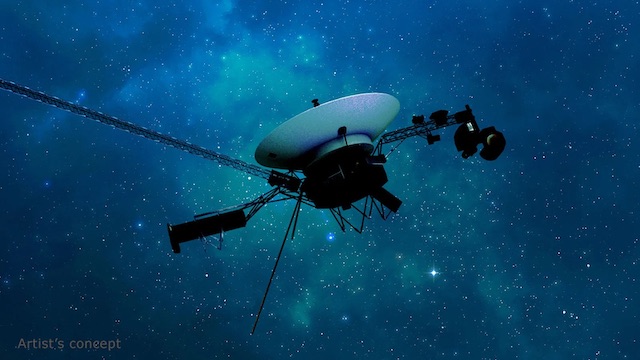
The efforts should help extend the lifetimes of the agency's interstellar explorers.

Download the Voyager 40th Anniversary posters.
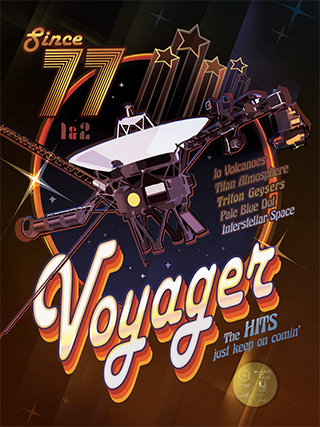
- Today's news
- Reviews and deals
- Climate change
- 2024 election
- Fall allergies
- Health news
- Mental health
- Sexual health
- Family health
- So mini ways
- Unapologetically
- Buying guides
Entertainment
- How to Watch
- My watchlist
- Stock market
- Biden economy
- Personal finance
- Stocks: most active
- Stocks: gainers
- Stocks: losers
- Trending tickers
- World indices
- US Treasury bonds
- Top mutual funds
- Highest open interest
- Highest implied volatility
- Currency converter
- Basic materials
- Communication services
- Consumer cyclical
- Consumer defensive
- Financial services
- Industrials
- Real estate
- Mutual funds
- Credit cards
- Credit card rates
- Balance transfer credit cards
- Business credit cards
- Cash back credit cards
- Rewards credit cards
- Travel credit cards
- Checking accounts
- Online checking accounts
- High-yield savings accounts
- Money market accounts
- Personal loans
- Student loans
- Car insurance
- Home buying
- Options pit
- Investment ideas
- Research reports
- Fantasy football
- Pro Pick 'Em
- College Pick 'Em
- Fantasy baseball
- Fantasy hockey
- Fantasy basketball
- Download the app
- Daily fantasy
- Scores and schedules
- GameChannel
- World Baseball Classic
- Premier League
- CONCACAF League
- Champions League
- Motorsports
- Horse racing
- Newsletters
New on Yahoo
- Privacy Dashboard
- Buying Guides
NASA hopes to resolve Voyager 1's communication issues by 'poking' its flight data computer
Back in 2023, we reported that NASA had lost telemetry and thus alignment, steering controls, and usable research data from its historic Voyager 1 probe as it drifted deeper into space, leaving its fate uncertain— but today, a new NASA blog post gives us some more hope for the Voyager. The agency now has a full readout of the ship's FDS memory, which could hopefully lead to a fix.
NASA never actually lost communication with the device. Usable research data and most controls have simply not been working for months, though— which is particularly problematic when even sending signals to the Voyager in the depths of space can take as long as 22.5 hours, 45 hours once you count the round trip. If the issues with Voyager can't be fixed, it will indeed be lost to the cosmos, permanently, though not before having made human history in the process.
So, why is Voyager 1, the probe also known as the farthest human-made object from Earth, in such a position where it could be permanently retired 45 years after its launch in 1977? The date of that original launch should give a hint: the primitive equivalent to RAM inside the Voyager's onboard Flight Data System (FDS), finally flipped or corrupted. Truthfully, the fact it's even lasted this long drifting through the stars is kind of a miracle in and of itself.
So, on March 1, NASA decided to send a "poke" to Voyager 1. The "poke" was a command that pushed the FDS through different sequences in hopes of finding the offending bits. The response, received on March 3rd, was mostly the same indecipherable data stream as before, but with a new signal in an unrecognizable format.
Decoding of the new signal data commenced on March 7th, and three days later, on March 10th, NASA scientists confirmed the peculiar new signal was actually a full readout of the FDS' memory— exactly the diagnostics data they've needed to find the true root of this issue and potentially fix it.
With any luck, this breakthrough will lead to a full fix for the Voyager, or at least make it recoverable so we can bring the Voyager back here to Earth. After a four-decade odyssey across the stars, anybody would need the rest.
Recommended Stories
Wnba draft winners and losers: as you may have guessed, the fever did pretty well. the liberty perhaps not.
Here are five franchises who stood out, for better or for worse.
Ryan Garcia drops Devin Haney 3 times en route to stunning upset
The 25-year-old labeled "mentally fragile" by many delivered the upset for the ages.
Dave McCarty, player on 2004 Red Sox championship team, dies 1 week after team's reunion
The Red Sox were already mourning the loss of Tim Wakefield from that 2004 team.
Yankees' Nestor Cortés told by MLB his pump-fake pitch is illegal
Cortés' attempt didn't fool Andrés Giménez, who fouled off the pitch.
Boban Marjanović hilariously misses free throws on purpose to give Clippers fans free chicken
Boban Marjanović is a man of the people.
Robert Kraft reportedly warned Falcons owner Arthur Blank not to trust Bill Belichick during head coach interviews
Bill Belichick's former boss Robert Kraft reportedly tanked his chances of getting hired as the Falcons head coach.
A rare 'devil comet' will reach peak brightness this weekend. Here's how you can see it.
On Sunday, the rare devil comet will reach its closest point to the sun, creating an illuminating sky show. Here is how skygazers can watch it.
Oakland University outfielders combine to make spectacular catch vs. Northern Kentucky
Oakland University outfielders John Lauinger and Reggie Bussey combined on what could be college baseball's best catch of the 2024 season against Northern Kentucky.
Arch Manning puts on a show in Texas' spring game, throwing for 3 touchdowns
Arch Manning gave Texas football fans an enticing look at the future, throwing for 355 yards and three touchdowns in the Longhorns' Orange-White spring game.
2024 Shelby Super Snake upgrades the Mustang with insane power and plenty of carbon fiber
Shelby's new Super Snake is a super-limited, one-year-only build that takes the Mustang to a whole new level of performance.
Shohei Ohtani breaks Hideki Matsui's MLB record for HRs by Japanese-born player
Shohei Ohtani keeps dominating.
NASCAR: Tyler Reddick wins at Talladega as Michael McDowell triggers massive crash
It's Reddick's first win of the season and it came as McDowell crashed from the lead on the final lap.
Commanders hosted 4 top QB prospects at once, and Jayden Daniels' agent wasn't happy
The Commanders had an unusual visit with multiple QB prospects.
2024 Masters payouts: How much did Scottie Scheffler earn for his win at Augusta National?
The Masters has a record $20 million purse this year.
NBA playoffs: Predictions for Knicks-Sixers, Nuggets-Lakers and every first-round series
Our NBA experts make their predictions for every first-round series in the playoffs.
Former Rams and Eagles QB Roman Gabriel, 1969 NFL MVP, dies at 83
Former Los Angeles Rams and Philadelphia Eagles quarterback Roman Gabriel died at the age of 83. He was the NFL MVP in 1969.
Nelly Korda grabs historic fifth straight win, second major title with victory at Chevron Championship
Nelly Korda is now just the third player in LPGA Tour history to win in five straight starts, and the first since Annika Sorenstam did so in 2004-05.
The world isn’t as messed up as you might think
Americans are in a gloomy mood, but new research points out that a lot of imortant things are going right.
2024 Toyota Land Cruiser Review: Cool, capable, family friendly, perhaps too pricey
Everything we know about the all-new 2024 Toyota Land Cruiser, including its price, fuel economy, hybrid power specs and more.
How Victor Wembanyama's rookie season ranks in NBA history
Victor Wembanyama's rookie NBA season is finished. The San Antonio Spurs will sit him in Sunday's regular-season finale. Where does his first season rank among the league's greats?

COMMENTS
In the NASA Eyes on the Solar System app, you can see the real spacecraft trajectories of the Voyagers, which are updated every five minutes. Distance and velocities are updated in real-time. For a full 3D, immersive experience click on View Voyagers link below to launch the NASA Eyes on the Solar System app. View Voyager.
This is a real-time indicator of Voyager 1's distance from Earth in astronomical units (AU) and either miles (mi) or kilometers (km). Note: Because Earth moves around the sun faster than Voyager 1 is speeding away from the inner solar system, the distance between Earth and the spacecraft actually decreases at certain times of year.
About the mission. Voyager 1 reached interstellar space in August 2012 and is the most distant human-made object in existence. Launched just shortly after its twin spacecraft, Voyager 2, in 1977, Voyager 1 explored the Jovian and Saturnian systems discovering new moons, active volcanoes and a wealth of data about the outer solar system.
The twin Voyager 1 and 2 spacecraft are exploring where nothing from Earth has flown before. Continuing on their more-than-44-year journey since their 1977 launches, they each are much farther away from Earth and the sun than Pluto. In August 2012, Voyager 1 made the historic entry into interstellar space, the region between stars, filled with ...
Voyager 1 and its twin Voyager 2 are the only spacecraft ever to operate outside the heliosphere, the protective bubble of particles and magnetic fields generated by the Sun. Voyager 1 reached the interstellar boundary in 2012, while Voyager 2 (traveling slower and in a different direction than its twin) reached it in 2018.
In the year 40,272 AD, Voyager 1 will come within 1.7 light years of an obscure star in the constellation Ursa Minor (the Little Bear or Little Dipper) called AC+79 3888. Voyager 2 is also escaping the solar system at a speed of about 3.1 AU per year, 48 degrees out of the ecliptic plane to the south toward the constellations of Sagitarrius and ...
This artist's concept shows NASA's Voyager 1 spacecraft exploring a region called the "depletion region" or "magnetic highway" at the outer limits of our heliosphere, the bubble the sun blows around itself. ... California Institute of Technology in Pasadena manages JPL for NASA. The Voyager missions are a part of NASA's Heliophysics System ...
The twin spacecraft Voyager 1 and Voyager 2 were launched by NASA in separate months in the summer of 1977 from Cape Canaveral, Florida. ... Both are with JPL. JUPITER Voyager 1 made its closest approach to Jupiter on March 5, 1979, and Voyager 2 followed with its closest approach occurring on July 9, 1979. The first spacecraft flew within ...
On 5 March 1979, Voyager 1 passed Jupiter for the first time in a landmark moment in global space history. Designed to take advantage of a rare planetary alignment that occurs only once in 176 years, Voyagers 1 and 2 remain both the most distant human-made objects in existence and the most well-traveled spacecraft in history.
Formerly known as Mariner Jupiter-Saturn 1977 or MJS77, Voyager is the most distant artificial object from Earth. Launched just 16 days after its twin spacecraft, Voyager 2, Voyager 1 began its exploration of the Jovian and Saturnian systems, discovering new moons, active volcanoes, and a wealth of data about the outer solar system.
Engineers have repaired an issue affecting data from NASA's Voyager 1 spacecraft. Earlier this year, the probe's attitude articulation and control system (AACS), which keeps Voyager 1's antenna pointed at Earth, began sending garbled information about its health and activities to mission controllers, despite operating normally.The rest of the probe also appeared healthy as it continued ...
The twin Voyager 1 and 2 spacecraft are exploring where nothing from Earth has flown before. Continuing on their more-than-45-year journey since their 1977 launches, they each are much farther away from Earth and the Sun than Pluto. ... The twin spacecraft Voyager 1 and Voyager 2 were launched by NASA in separate months in the summer of 1977 ...
The Golden Record. Pioneers 10 and 11, which preceded Voyager, both carried small metal plaques identifying their time and place of origin for the benefit of any other spacefarers that might find them in the distant future. With this example before them, NASA placed a more ambitious message aboard Voyager 1 and 2, a kind of time capsule ...
Voyager. Nearly three decades ago, on November 12, 1980 at 3:56 PM PST, the Voyager 1 spacecraft made its closest approach to Saturn in mankind's first detailed reconnaissance of that giant planet. One hour and 25 minutes later, the signal from that moment arrived at Earth, while the world waited in awe as picture after picture unfolded on ...
This artist's concept depicts NASA's Voyager 1 spacecraft entering interstellar space, or the space between stars. Interstellar space is dominated by the plasma, or ionized gas, that was ejected by the death of nearby giant stars millions of years ago. The environment inside our solar bubble is dominated by the plasma exhausted by our sun,
In November 2023, the first spacecraft to journey to interstellar space, Voyager 1, started spouting gibberish. Now, NASA knows why. The team is working on a fix.
This is a real-time indicator of Voyager 1's distance from Earth in astronomical units (AU) and either miles (mi) or kilometers (km). Note: Because Earth moves around the sun faster than Voyager 1 is speeding away from the inner solar system, the distance between Earth and the spacecraft actually decreases at certain times of year.
NASA hopes to resolve Voyager 1's communication issues by 'poking' its flight data computer. Shot of the NASA Voyager 1 probe, taken from the official voyager.jpl.nasa.gov site. Back in 2023, we ...
The team at NASA's Jet Propulsion Laboratory (JPL) has tried numerous fixes, none of which have worked. Voyager 1 was the first human-made object to leave the solar system in 2013, followed a few ...